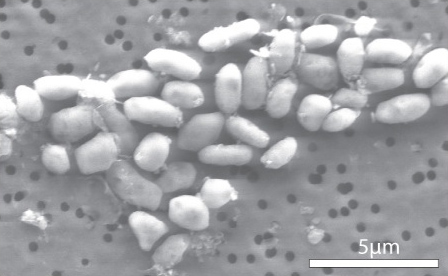Retracted: The Controversial 2010 'Arsenic Life' Study's Legacy

In a significant development in scientific publishing, the journal *Science* has officially retracted the controversial 2010 paper titled "A bacterium that can grow by using arsenic instead of phosphorus" authored by Felisa Wolfe-Simon and her colleagues. This decision, announced on July 25, 2025, follows a lengthy history of critique and skepticism surrounding the paper's findings, which had initially sparked widespread excitement about the potential for alternative biochemistries in extraterrestrial life.
The original study suggested that a strain of bacterium, known as GFAJ-1, could incorporate arsenic into its DNA, a claim that contradicted long-standing biochemical principles. This assertion, promoted vigorously through press conferences and media outlets—including a notable event hosted by NASA—led to the popularization of the term "arsenic life," igniting imaginations about life forms that could thrive in extreme environments.
However, the scientific community quickly raised alarms. According to Dr. Rosie Redfield, Professor of Biology at the University of British Columbia, "The paper's claims were met with skepticism almost immediately due to fundamental flaws in the experimental design and interpretation" (Redfield, 2012). Over the years, numerous studies failed to replicate Wolfe-Simon's results, casting doubt on the validity of the findings.
In their editorial retraction, the editors of *Science*, led by Editor-in-Chief H. Holden Thorp, indicated that the paper did not meet current standards for publication integrity. "Our decision was not based on allegations of fraud, but rather on the realization that the reported experiments do not support the key conclusions of the paper," stated Thorp (Thorp, 2025). This marks a shift in the journal's retraction policy, adapting to contemporary norms that allow for retractions based on the lack of supporting evidence, rather than outright misconduct.
The retraction has been met with mixed responses from the scientific community. While some, like Dr. Paul Davies, a theoretical physicist and astrobiologist at Arizona State University, argue that the paper's conclusions were overstated but not entirely without merit, others echo the sentiment that retractions should be reserved for cases of misconduct (Davies, 2025). "The importance of discussing incorrect results is paramount in science; it fosters a better understanding of the research process," he remarked.
The original authors, including Wolfe-Simon, have expressed their disagreement with the retraction, suggesting that it undermines the scientific discourse necessary for progress. In a collective letter, they emphasized, "Scientific understanding evolves through debate, and our work has catalyzed significant research in extremophiles and biochemistry" (Wolfe-Simon et al., 2025).
This case highlights the ongoing challenges within scientific publishing, particularly regarding the balance between promoting innovative hypotheses and ensuring rigorous validation of findings. Retraction policies are under scrutiny as the academic community grapples with how to manage the complexities of scientific knowledge and integrity.
The legacy of the "arsenic life" paper serves as a cautionary tale about the responsibilities of researchers, publishers, and the media in the dissemination of scientific knowledge. It underscores the necessity for ongoing dialogue and critical assessment in the pursuit of scientific truth, ensuring that even bold claims are subject to the rigors of empirical validation.
As the field of astrobiology continues to expand, the implications of this case will likely influence future research methodologies and publishing standards, prompting a reassessment of how scientific claims are communicated and evaluated within the broader context of scientific inquiry.
Advertisement
Tags
Advertisement





